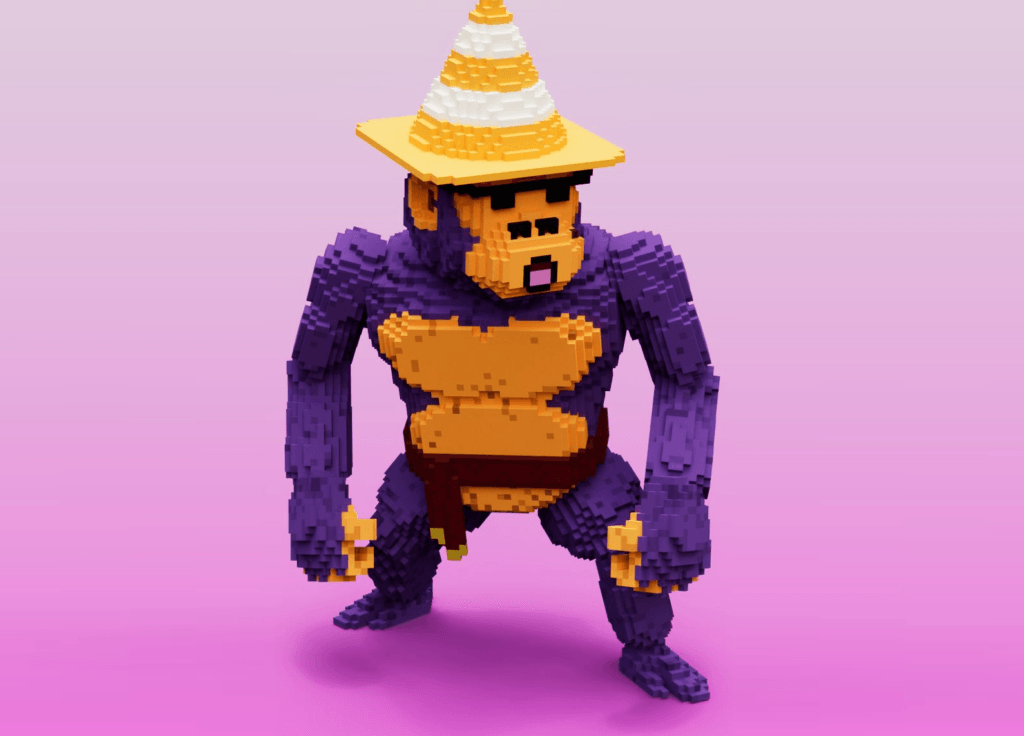In this article, discover the NFT mistakes you must avoid before buying a digital non-fungible token.
If you’re interested in getting involved in the NFT space, you’ll probably find yourself on a marketplace like OpenSea, Rarible, or even LooksRare, browsing a feed of images and wondering:
What exactly are all these overpriced JPEGS and memes?
After looking at the floor price, it’s tempting to buy an NFT and hope for the best. You’re experiencing hopium. (Confused? Read my guide to NFT common terms and buzzwords.)
Wait! Before spending hard-earned funds or Eth, you can quickly learn about the space for free and avoid common mistakes new NFT buyers (like me) make.
When you are finished check out my video below.
The content in this article is for informational purposes only. NFTs are incredibly risky. Many will go to zero, which I’ll talk about in the video at the end of this article, and you have to do your own research. I’m not a financial advisor. So, play it safe.
Table of Contents
1. Buying Cheap NFTs, Randomly
The most popular NFT projects are prohibitively expensive, which leads enthusiasts to newer, cheaper NFTs. But many of these projects are scams or will go to zero.
The first time I used the NFT marketplace Opensea, I couldn’t believe the floor price of some of the top NFTs. The floor price represents the minimum amount of Ethereum an NFT is bought and sold for on the secondary market.
Many bluechip NFTs trade for several dozen Eth, representing tens of thousands of dollars. So, I went way down the rankings page and bought more affordable NFTs for 0.5 Eth. I found out later these NFTs were dead projects. I’d wasted some of my NFT budgets by not researching thoroughly.
If you want to buy an NFT, learn about the project first on Twitter via their roadmap and Discord channel.
On Discord, interact with the community and consider how many people are active in the community. (Don’t react or respond to direct messages from others. Chances are, they’re scammers.)
You can also use NFT websites like rarity.tools to learn about upcoming projects. Once you’ve set a budget, you can buy your first NFT.
When you’re ready, I recommend buying your first NFT on Solana or via Immutable X. These NFTs are much cheaper, and you’ll save money on gas fees (a cost paid to Ethereum blockchain miners).
2. Day Trading NFTs

Buying an NFT and expecting to flip it for a quick profit might work out… or you might get rekt.
The price fluctuations of NFTs are insane. NFTs can go from one .01 ETH to one Eth and back again in a few weeks. And that’s before taking into account the price fluctuations of Eth itself. So, prepare yourself.
When looking at these crazy price fluctuations, it’s tempting to think, “If I buy this NFT and hold onto it for a few weeks, I can flip it for a nice profit.” That’s potentially true, but catching a falling knife is always a bad idea.
If you’re planning on trading NFTs, you’ll need deep pockets due to the crazy price fluctuations and gas or Gweio cost. Many hyped NFTs will go to zero, and it’s challenging to pick out potential blue chips without insider knowledge or early access.
Instead, consider buying an NFT if you like the project artwork or want to learn more about the space. Then, write it off. Assume the NFT will become worthless until the market tells you otherwise.
3. Not Securing Your NFTs

NFT Twitter is full of threads from NFT holders complaining about getting hacked or scammed out of their purchases. Don’t make this mistake.
To buy an NFT, you’ll need to use a software wallet like MetaMask, and load it up with Ethereum purchased via a cryptocurrency exchange like Coinbase or Binance.
Software wallets enable investors to buy and sell NFTs quickly and easily. Unfortunately, they’re also prone to hacks via social engineering. After spending time on Discord, I discovered dozens of social engineering scams, including:
- People clicking on nefarious links sent via direct messages
- Images that install malicious code onto a computer or phone
- So-called “support team members” who get on calls with holders and ask them to share MetaMask details via a screen share
- Minting a project only for the project to be hacked or the developers to disappear with the funds of early minters
Protect yourself and those JPGs and memes by buying a Ledger Nano X or Trezor hardware wallet. Then, somebody can only transfer tokens from your wallet if they’ve physical access to the device or your secret seed phrase.
Transfer more valuable NFTs to your hardware wallet and mint via a software wallet, thereby setting up a type of firewall between your short and long-term holdings. Also, invest in and use antivirus and VPN software. And never keep your seed-phrase in an accessible location on your phone or computer.
4. Spending All Your NFT Budget At Once
It’s easy to burn through a stack of Eth or USD buying NFTs, but that’s a good way of missing out on potential market corrections.
I picked up several Eth in 2016-7 for a few hundred dollars. At one point, I even bought some Eth for $80. What a steal! At the time of writing this article, ETH traded for approximately $3,300.
In 2021, I set aside some ETH for buying NFTs on Opensea. I thought my budget would last the entire year. What did I know? I got so involved in the space and burnt through my NFT budget in a month.
Then, the market went downhill. If I’d dollar-cost-averaged my way into NFTs (picking up one every few weeks and not at once), I could have reduced my exposure and held onto more of my budget.
If you’ve Eth set aside for NFTs, don’t feel the need to spend it all at once because of price fluctuations. It’s still incredibly early for NFTs. The space is an accelerated version of the cryptocurrency market, which goes through boom and bust cycles every few years.
5. Buying Too Many NFT Projects
NFTs are more than JPGs, GIFs, memes, and even digital art. The cases for NFTS are diverse and take time to understand. It’s hard to do that if you own dozens.
Some, like the CryptoPunks, are picture-for-profiles that you can use for an online pseudonym. They also represent a part of the Ethereum blockchain’s history.
Others, like Anonymice, visually represent a form of decentralized finance, whereby you can stake the NFT on a blockchain and earn passive returns. Some NFTs, like those on the Sandbox, are assets for virtual games or worlds. And other NFTs, like VeeFriends, are tickets to virtual communities and real-world events.
In other words, the space is evolving rapidly. A week in NFT land is like a year in the real world. It’s impossible to keep up with all of these different projects.
Instead, pick one area of NFTs that interests you. It could be avatar-type projects like CyberKongz or digital art from the likes of ArtBlocks.
Only when you’ve learned about this type of project, move on to the next one. This self-directed study prevents from aping into complex projects.
6. Not Holding NFTs For The Long-Term

NFTs aren’t usually quick flips unless you know what you’re doing. Think back to Bitcoin when it first came out in the late 2000s.
In crypto-lore, May 22 is known as Bitcoin pizza day. On that date in 2010, Florida man Laszlo Hanyecz bought and ordered two pizzas for approximately 10,000 Bitcoin. As of 2021, those Bitcoin are worth approximately $630 million. He says he’s no regrets.
If you’d minted a CryptoPunks back in 2018, it would’ve cost you the cost of gas. Now, they sell for seven figures, and that’s if you could even buy one as many holders have taken them off the market. They’re considered a valuable form of digital real estate.
Do you want to become the NFT pizza guy? If you’re confident about an NFT, think of it as a long-term hold, even if the floor price rises. It could become a future bluechip project. Even one bluechip NFT can cover the cost of several dozen that tanked.
7. Talking To People About NFTS Who’ve No Interest In NFTs
To some, NFTs represent the future of web 3.0 and the creator economy. To others, they are overpriced JPG files.
When I got involved with NFTs, I lost sleep. The pace is mesmerizing, and I couldn’t get over the opportunities NFTs offer creators to connect with their audience.
NFTs have many use cases. A few include building communities, offering early access, selling physical and digital products, and even art. Creators can earn in perpetuity from secondary sales. They can also use them to connect with an audience without relying on Web 2.0 gatekeepers like Facebook.
When I explained some of the above to friends, they said things like, “But aren’t NFTs just JPGs? Isn’t this just something that you right-click on and save as?”
One friend even messaged me to say, “Are you really spending money buying fancy little pictures?” So, I stopped telling some of my friends with no interest in NFTs about what they could do.
If you’re getting involved in the space, don’t expect everyone to appreciate your buys. The NFT space is akin to where Bitcoin was around May 22, 2010. Sure many projects are cash-grabs, but a few, like CryptoPunks, are changing the face of the creator economy.

